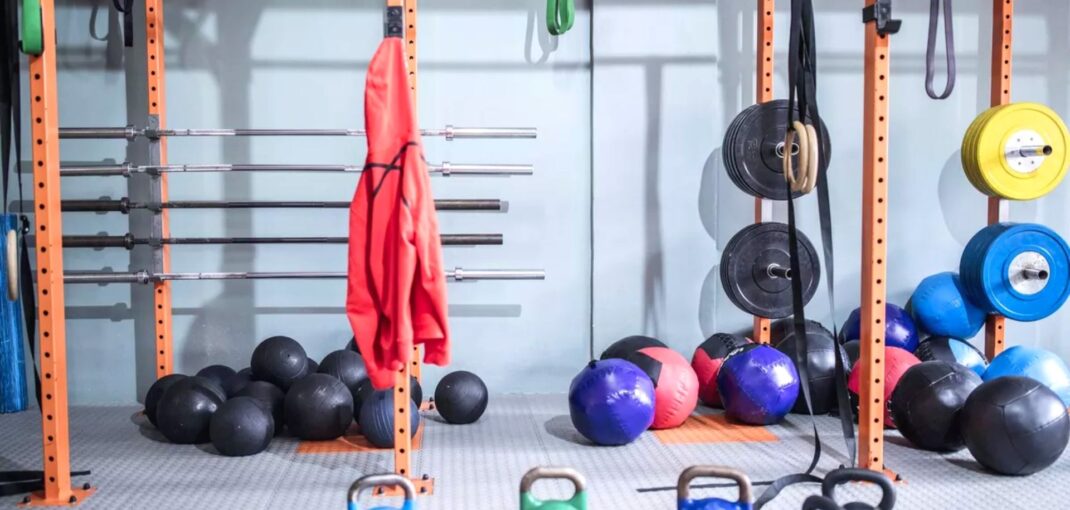Weight training is essential for boxers to promote specific athletic characteristics like speed, strength, power, and endurance.
In the past, veteran boxers and coaches have frowned upon weight training, which makes a boxer slower. However, this has been proven to increase the power of boxers if used intelligently.
What weight training does is that lifting weights helps create faster, more robust, and hard-hitting athletes who can threaten their opponents. Also, it can increase the anaerobic endurance and the explosive power of boxers.
But it would be best if you carried out several general and specific exercises daily to enhance your overall strength and agility. We have divided them into specific categories to help you understand and train your body effectively.
Without further talking, let’s dig in!
Guide To Weight Training For Boxing
Ideally, a boxer should train with weights 2-3 times per week. Engaging in more than three sessions per week can interfere with other specific sports training requirements like pad work and sparring. Besides, it is always better to do weight training after sparring. And it would be best if you stopped it at least a week before the competition.
As all athletes have specified needs, you can modify the provided correct weight training program according to your boxing style, age, available facilities, goals, and other factors.
1. General Preparation

Before beginning specific training programs, the first phase of weight training involves strengthening and conditioning the muscles. If you train seasonally, it must be carried out in early preseason. However, if this is not the case, you can carry your boxing workout sequentially.
Notably, one must not engage in boxing weight training workouts before a boxing training session. You can do it before or after ring training or any other day as convenient. Remember that a boxer must stay fresh for ring practice and continue learning and practising technical skills to deliver killer blows to opponents.
Frequency:
2-3 sessions/week for 9-10 weeks
Exercises:
Three sets of 10-12 reps (from the list below) and warm-up and cool-down.
- Warm-up
- Leg press or squat
- Chest press or bench press
- Crunch
- Triceps pushdown
- Seated cable row
- Overhead press
- Lat Pulldown
- Biceps curl
- Cool-down and stretch
These boxing workouts are a must-to-do before starting any weight training, as it allows a boxer to remain enthusiastic and energetic for further sessions. Additionally, you should take a rest period of 30-90 seconds between each rep.
2. Specific Preparation

In the preparation phase of weight training at home, the focus remains on developing skills needed to win inside the ring.
a) Strength And Power
Frequency:
2-3 sessions in a week, 4-6 weeks
Exercises:
Five sets of 6 reps of
- Incline bench press
- Romanian deadlift
- Hang power clean
- Squats
- Pull-ups
After each set, a rest of 3-5 minutes is compulsory as it allows the entire body to recover from strenuous workouts.
b) Speed And Agility
Speed and agility training focuses primarily on side-to-side and quick movements. If you have seen a boxer stop immediately and change direction swiftly in the ring, that’s agility training in action.
Lateral drills train athletes to make swift movements and take smooth steps sideways. They also strengthen the ability of your legs to slow down and stabilise, thereby allowing you to accelerate in a new direction. Plus, it improves your body’s ability to change direction quickly.
“Float like a butterfly, sting like a bee.” This quote describes Muhammad Ali’s style in the ring, the man who is widely considered one of the greatest boxers of all time. And this is what practical and dedicated speed training can do for you!
Frequency:
2-3 sessions per week for 4 to 6 weeks
Exercises:
Five sets of the following, each for a maximum of 30 seconds
- Agility ladder
- Broad jumps
- Single-leg lateral hops
- Box jumps
The rest of 1-2 minutes to be taken between each set.
3. Competition Phase

This phase focuses on maintaining the power and core strength of an athlete. However, you must take about one week off weight training before a competition. It will be crucial to focus on specific preparation, and the effective weight training in this phase merely plays a maintenance role.
Type:
Lighter loads, power, and faster execution
Frequency:
1-2 sessions per week
Exercises:
Ten reps in 3 sets and rapid concentric movement
- Hang clean
- Squats
- Romanian deadlifts
- Crunches
The recommended rest period is about 1-2 minutes between consecutive sets.
4. Aerobic Conditioning
As you may already know, a boxing match runs for 12 rounds, so a boxer needs plenty of aerobic fitness and stamina. That’s why most professional boxers prefer aerobic conditioning sessions that involve a roadwork run to improve endurance and aerobic fitness.
It is generally preferred to run for 6-8 kilometres at a moderate pace for at least four days a week. But you should avoid longer aerobic conditioning training to prevent muscle loss and enhance muscle mass. Furthermore, circuit training in gyms can serve as practical conditioning training.
Training for Boxing with Weights
That brings us to the end of today’s guide. But there are just a few more things we want to talk about before wrapping up.
Firstly, always warm up and cool down before starting any weight training. A warm-up helps reduce muscle soreness and minimises your risk of injury. Also, cooling down allows gradual recovery of blood pressure and heart rate.
Besides, you must not perform any strength training exercises through any injuries as it might worsen the condition and substantially affect your future career. And it is crucial to have a trained boxing coach who will guide you through program details and ensure you win a championship.
Following a structured weight training program and weight training routine and being aware of the risks will ensure that you turn into a faster, stronger, and hard-hitting opponent.
If you have any questions, feel free to reach out to us!






